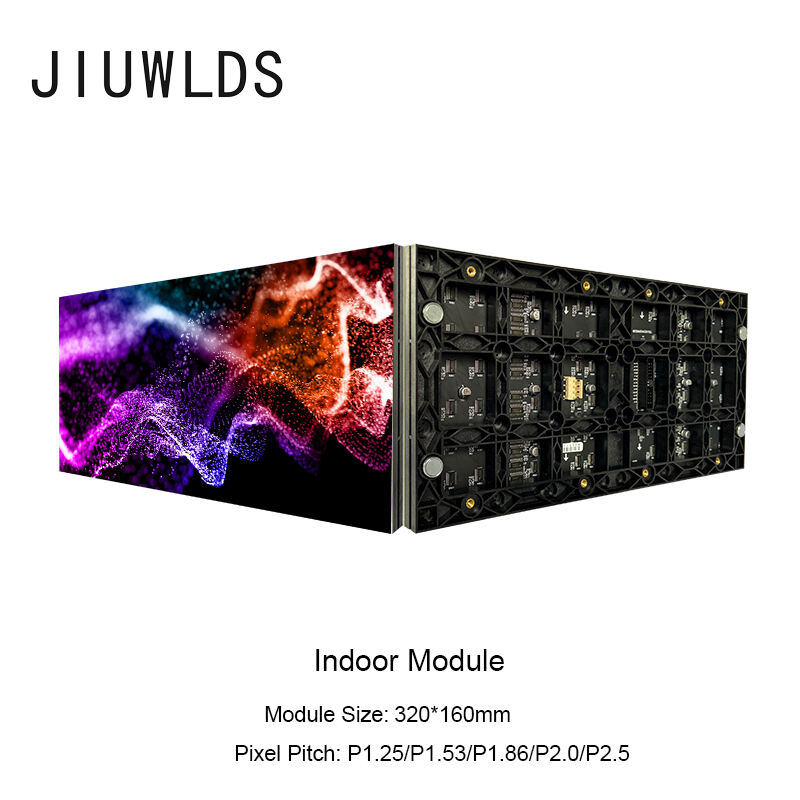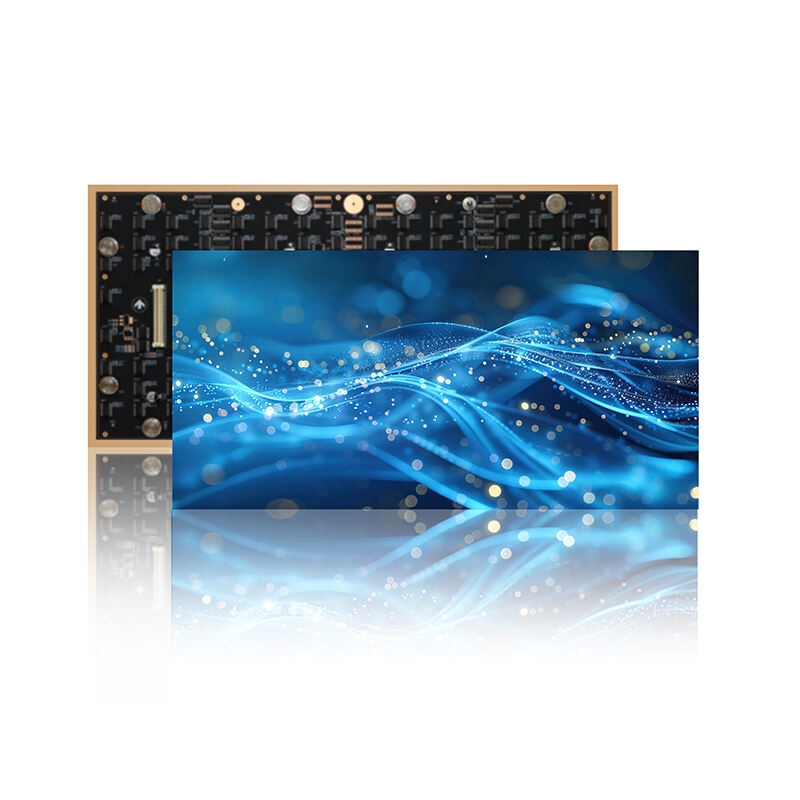Outdoor LED Displays: Durability and Performance in Harsh Environments
Robust Protection Ratings: Shielding Against Harsh Elements
IP Ratings Explained: Dust and Water Resistance
Understanding the International Protection (IP) rating system is vital for evaluating the durability of outdoor LED displays. This system signifies a display's ability to resist dust and water, crucial for maintaining functionality in harsh environments. High IP ratings such as IP65 and IP67 ensure superior dust and water resistance, making them ideal for outdoor conditions. For instance, IP65-rated displays are dust-tight and can withstand water jets, whereas IP67-rated units can survive immersion in up to 1 meter of water. According to research, displays with low IP ratings have significantly higher failure rates in challenging conditions, highlighting the necessity for robust protection. By choosing LEDs with high IP ratings, businesses can benefit from enhanced longevity and reliability of their outdoor advertising tools.
Weatherproof Enclosure Design for Outdoor LED Displays
Designing weatherproof enclosures for LED displays necessitates meticulous engineering considerations to ensure durability under adverse conditions. The choice of materials, such as aluminum or stainless steel, is critical, as these provide excellent resistance against rust and corrosion. Enclosures need thorough sealing with gaskets to protect internal components from moisture and dust intrusion. Instances of successful installations often highlight weatherproof designs outlasting conventional models, setting a standard for durability in severe weather. Poor enclosure design can significantly elevate maintenance costs and impair display functionality over time, emphasizing the importance of investing in quality weatherproof solutions for outdoor LED screens.
High Brightness and Wide Viewing Angles: Visibility in Challenging Conditions
Nits and Sunlight Readability for Outdoor Advertising
The brightness of an outdoor LED display is measured in nits, a unit that quantifies luminance. Higher nit values equate to better sunlight readability, ensuring that displays remain visible even under direct sunlight. According to experts, optimal nit levels for outdoor advertising range between 5,000 to 10,000 nits, a range that ensures clear visibility in the brightest conditions. Failing to meet this standard can significantly impair advertising effectiveness, reducing viewer engagement as critical messaging may become difficult to discern during daylight hours. Therefore, selecting displays with adequate brightness is crucial for impactful outdoor advertising.
Optimizing Viewing Angles for Crowded Public Spaces
In busy environments, the viewing angle of an LED display is crucial in optimizing visibility and enhancing user experience. Displays designed with wide viewing angles ensure that content remains clear and vivid from various perspectives, accommodating individuals moving in high-traffic areas. For instance, wide-angle configurations have proven effective in crowd-rich urban settings, drawing more viewers with impactful visuals. From an urban planning perspective, strategic placement of such displays can maximize advertising reach, ensuring the message effectively targets a larger audience in bustling public spaces. Therefore, consideration of viewing angles is vital for efficient display utilization in dense settings.
Adaptability to Diverse Climates: Extreme Temperature Performance
Thermal Management Systems for -40°C to 50°C Operation
The engineering behind thermal management systems is vital for maintaining the reliable operation of outdoor displays across extreme temperatures. These systems include components like integrated cooling fans, heat sinks, and thermostats that permit LED screens to function efficiently in environments ranging from -40°C to 50°C. By regulating internal temperatures, they prevent overheating and freezing, which can otherwise impair performance. Data indicates that with efficient thermal management, the lifespan of LED displays is significantly prolonged, and failure rates are minimized. In fact, such systems are crucial in ensuring LED reliability, allowing displays to remain bright and clear in challenging climates.
Humidity Resistance in Coastal and Rainforest Environments
Outdoor LED displays face distinct challenges in high-humidity environments such as coastal areas and rainforests. Humidity can lead to internal corrosion and reduced performance if not properly managed. Engineering solutions addressing these issues include moisture-resistant coatings and sealed enclosures that prevent water ingress, ensuring longevity and image quality. Studies have shown that without proper humidity resistance, LED displays may suffer from compromised color accuracy and shortened lifespan. Therefore, ensuring enhanced humidity resistance is essential for maintaining both functionality and durability in these demanding settings.
Transitional Sentence: As we move to understand the importance of thermal and humidity management, it's clear that LED technology must also cater to varying brightness and viewing angles, which we previously explored in high-traffic areas.
Anti-Aging and Stability: Long-Term Outdoor Reliability
UV-Resistant Materials for Fade-Free Color Accuracy
UV exposure can significantly degrade materials used in LED displays, leading to color fading and reduced performance. By employing UV-resistant technologies, outdoor LED displays can maintain their color accuracy over time. These advanced materials are engineered to withstand prolonged exposure to sunlight, preventing the detrimental effects of UV radiation. For instance, a study on the durability of outdoor materials showed that UV protection technologies significantly slow down material degradation, thereby extending the display's lifecycle. Investing in UV-resistant materials can be a cost-effective decision in the long run. While the initial expenditure might be higher, it drastically reduces the need for frequent replacements, thereby saving on potential future costs.
Corrosion Prevention in Salt-Spray and Polluted Air
Outdoor LED displays encounter specific challenges in coastal and urban environments due to the presence of saline spray and polluted air. These conditions can cause corrosion, which compromises the structural integrity and performance of the displays. To combat this, manufacturers use corrosion-proof coatings and durable materials that fortify the displays against aggressive environmental elements. Research has shown that specialized coatings, such as anodized aluminum or other anti-corrosive solutions, play a crucial role in enhancing the lifespan of LED screens. These coatings help maintain the display's durability and functionality, proving to be highly effective in preventing corrosion-related issues.
Rental LED Display Solutions for Temporary Installations
Quick-Deploy Durability for Events and Campaigns
In the dynamic world of events and promotional campaigns, there is a growing demand for rental LED display solutions that can be quickly deployed and removed when needed. These solutions must be robust enough to withstand frequent handling and various environmental conditions while maintaining high performance. It’s been noted that the rental LED display market has seen a significant increase in demand due to their convenience and versatility. According to recent statistics, event businesses increasingly favor LED rentals for their ease of installation and transportability.
Durability plays a crucial role in ensuring customer satisfaction among those hiring LED displays. Rental companies often find that more durable displays lead to higher levels of client satisfaction and more repeat business, as clients appreciate the reliability in delivering their promotional content without technical hitches. Consequently, investing in displays that combine quick deployment with lasting durability is a strategic move for rental companies aiming to solidify a reputation for excellence and dependability.
Modular Designs for Wind-Resistant Temporary Setups
Modular design in LED displays has revolutionized the rental industry, especially for temporary setups. This design simplifies assembly and disassembly, which is paramount in fast-paced event environments where time is often limited. The modularity allows for easy configuration of displays to fit various spaces and purposes without compromising on the ease of setup.
Moreover, wind resistance is essential for outdoor events where weather can pose significant challenges. These setups must withstand gusts without risking damage or instability. Engineering principles, such as aerodynamics and robust structural frameworks, are crucial in these scenarios. There are numerous examples of successful wind-resistant displays that have performed admirably under adverse weather conditions, proving the effectiveness of these designs. Such reliability ensures that the message or visual display remains the focus, irrespective of environmental interruptions.







 Hot News
Hot News